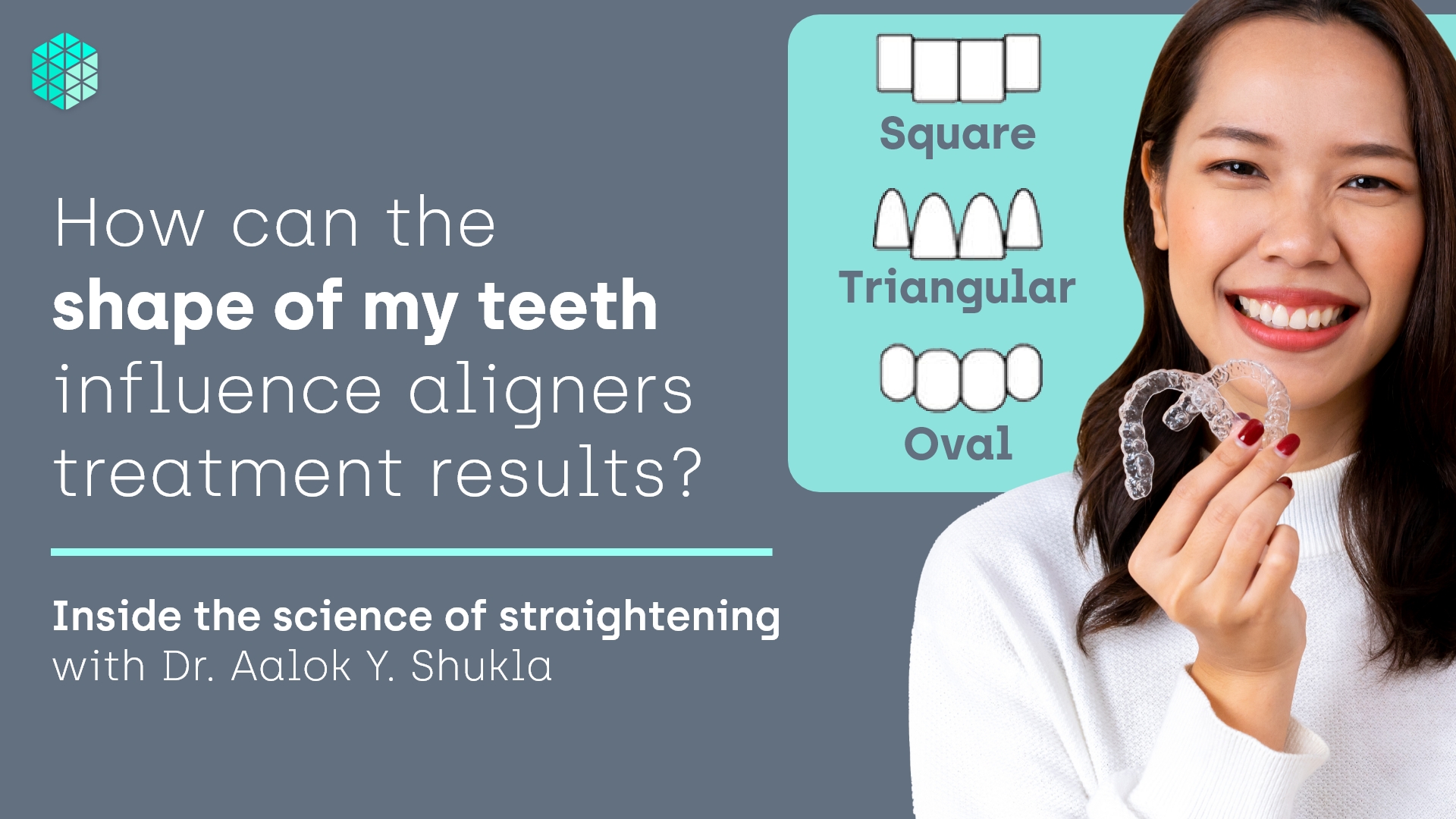
Teeth shapes and sizes: What’s their role in aligner treatment?

Key points summary:
- The shape of teeth CAN influence clear aligners treatment results.
- Teeth shapes and sizes can give the illusion that you have a crooked smile, although your teeth are as straight as can be (even after teeth aligners treatment!).
- You can’t change tooth shape or size with clear aligners, but cosmetic teeth bonding is a simple solution that can help perfect tooth shape and size.
In this episode on the science of teeth straightening, Dr. Aalok Y. Shukla further explains why tooth shape matters so much in cosmetic dentistry.
Teeth shapes and sizes
There are two main ways that your tooth shape is determined. Your natural tooth shape, and wear from years of chewing.
There are three main natural tooth shapes:
- Rectangular, with no gaps between teeth;
- Triangular, where black triangles can appear between teeth because they are wider at the top;
- Oval, with natural space between teeth edges as they curve at the top.
Depending on your tooth size and position, such as overlapping, skew or spaced teeth, some tooth surfaces may wear down more than others. This, in turn, can result in short teeth or skew tooth shape.
Do braces change your teeth shape?
Clear aligners do not change the shape of teeth, they simply move them into better alignment through constant pressure to achieve the naturally straightest position possible. The same applies to fixed metal braces: they are not designed to change your teeth shapes and sizes, but instead to optimise the alignment of teeth so that they fit nicely next to each other.
Something to keep in mind
Natural spacing between teeth can be beneficial. For example, if you have triangular shaped teeth, it is normal for small gaps to appear between them. These little spaces actually make effective brushing and flossing easier, helping maintain a healthy smile.
So, how can you change your teeth shapes and sizes?
If you’ve been watching Straight Teeth TV season 2, you may already have one or two obvious solutions in mind: cosmetic teeth bonding or teeth contouring! Let’s take a closer look at each of these options:
- Cosmetic bonding: Additive dental procedure in which a tooth coloured bonding agent is moulded to your tooth. This is then hardened using a curing light. With this treatment, your natural teeth shapes can be redefined to match the teeth around them, creating a balanced smile. Another perk of cosmetic tooth bonding is that it is reversible. If too much bonding material is added, it can be filed down and removed, with your natural tooth wholly intact.
- Teeth contouring: Another popular approach is teeth contouring, a subtractive cosmetic dental procedure used to fix minor imperfections. By carefully removing thin layers of surface tooth enamel, tooth size and shape can be corrected. However, it’s important to remember that we don’t have an infinite amount of tooth enamel. Once it is removed it cannot grow back.
In the end, the most important factors during teeth straightening are getting a functional and confident smile that you are happy with. That’s why it is so important to understand how tooth shape and size influence your end results, and which procedures are available to achieve your dream smile!

Still thinking about it?
Fill in your email to receiveyour free guide!


















